The chortling of kookaburras or screech of parrots; the smell of eucalyptus as you drive through ancient forests; the taste of yabbies caught fresh that morning. Australia has a capacity to delight all of the senses. Even the landscape is painted with an extraordinary palette, as layers of deep terracotta and burnt umber merge into luxurious swathes of green forest, shockingly slashed through by groves of psychedelic blue gum trees.
Having been several times to the wine regions of the south and east, my first visit to Western Australia renewed this sense of wonder. This is a low, gentle landscape by and large, much of it covered in bush, or dotted with sheep farms, apple and cherry orchards. But the coast can be wild, a surfers’ paradise as the Indian and Pacific oceans crash together to create a much more dramatic aspect.
Capital of Western Australia, Perth, is by some considerable margin its biggest city. Officially the world’s second most remote city, the distances from here to other ‘big’ towns of Western Australia (usually of no more than 10,000 people) are nothing compared to the distances to the cities of South Australia and the east. Flying from Perth to Sydney is equivalent of flying from London to Moscow – and about half of the way back again.
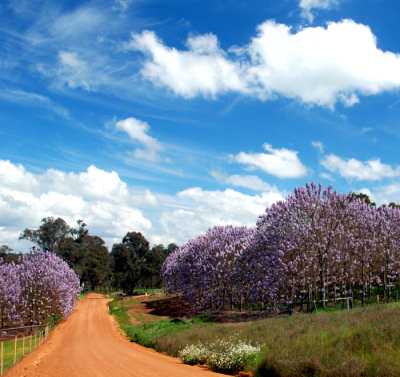
Western Australian wine
It is only in the past 30 years or so that Western Australia has developed a real reputation for quality wine. The warmer Swan Valley to the north of Perth is the oldest region, first planted in 1834. But it is far to the south in the much cooler Great Southern and Margaret River regions – now a byword for top flight Western Australian wines – that is the driving force of the industry today. To put that in perspective, whilst Margaret River grows only 3% of the country’s wine grapes, it commands over 20% of the premium wine market.
In October 2009 I travelled to Western Australia, to judge The Wine Show of Western Australia and spent a few days visiting some of the region’s wineries, mostly in Margaret River. Reports on a dozen estates and around 100 wines follow. The Wine Show itself was a fantastic experience, as three panels of judges gathered in a chilly Mount Barker in Great Southern to put over 800 wines from all over Western Australia to the test.
Classes I judged and which really impressed included 2007 and 2008 Chardonnays, the 2007 Cabernets and the 2007 and 2008 Rieslings, but as the ‘international’ judge at an Australian show, it is always the chance to spend a few days with your fellow judges – drawn from the countries brightest winemakers and wine journalists – that is incredibly informative about the state of play in the Australian wine scene.
Margaret River
Margaret River is one of the ‘must see’ destinations of Western Australia. Many international visitors to the State will see Perth, and make the relatively short trip down to Margaret River, even if they see little else. Perth itself buzzes with energy, clearly a city in full, confident stride with a beautiful waterfront and endless supply of attractions. A brand new extension to the Kwinana Freeway heading due south opened the weekend I drove down, cutting the journey time between Perth and Margaret River from three hours to two and half or less.
Geography

Grapes
Margaret River has forged its reputation on Cabernet Sauvignon, still regarded by most as the region’s best grape, though the other Bordeaux varieties are popular, as is Syrah. Pinot is happier further south in the cooler regions.
For whites, it is pretty much a straight shootout between Chardonnay and Semillon/Sauvignon Blanc – the latter two bracketed together because they are almost always blended together here. Viognier in encroaching a little, as is Pinot Gris, but the big three hold sway for now.
Wine styles
Margaret River has forged a reputation for making wines of balance and subtlety. Whether it’s down entirely to the climate and soils here, or whether it is down to the region’s isolation and determinedness to ‘do its own thing’ I do not know, but the full-throttle, super-ripe styles that can still be found in Barossa and Coonawarra rarely occur here. As in much else, when it comes to winemaking, Margaret River and Western Australia march to a slightly different beat.
Dry blends, both red and white, are the mainstays of the region, similar to Bordeaux – a region that is comparable in terms of climate and, to some extent, wine style. A little sparkling wine is made, and some sweet wines – there are some good liquor muscats and tawnies to be found in Western Australia too.
Vintages are rarely straightforward in any wine region, but a general summing up of recent vintages in Margaret River would be:
2009 very good – long, dry autumn. Wwinemakers could choose picking dates
2008 a really good vintage
2007 a warm, big and ripe vintage
2006 coolest vintage in the history of Margaret River
2005 excellent vintage with great weather conditions
The estates and wines
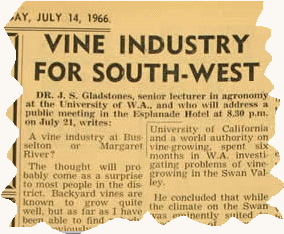
The founding fathers
Vasse Felix

Though the first to plant vineyards here, it is fair to say Vasse Felix slightly lost its way in the 1990s under the direction of a conglomerate called Heytesbury Ltd. Eventually Paul Holmes à Court bought his family out of Heytesbury Ltd, and became sole owner of Vasse Felix. Virginia came here late in 2006, from Australian Wine Holdings, and says that today she and Paul are totally focused on re-establishing the brand at the highest quality level. Their two big-brand, big sellers ‘Classic White’ and ‘Classic Blend’ where not even on the tasting table. “They are big sellers,” she tells me, “but we don’t talk about them.”
Our conversation turned to the ‘SSB’, and how wines here could have a pungency not unlike Marlborough Sauvignon Blanc. “Margaret River Semillon produces grass and thistle notes,” according to Virginia, but she insists it is not a ‘green’ character of under-ripeness, but part of the Margaret River terroir. “We don’t have green vegetable characters, we have soft, leafy herb characters of the region like thyme and marjoram – the two are nothing like each other.” The wines are distributed in the UK by Negociants UK.
for tasting notes on 9 wines from Vasse Felix
Cullen Wines
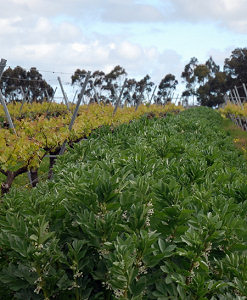
Diana and Kevin Cullen were dairy farmers here in the 60s when John Gladstones suggested the area might be interesting for vineyards. Vanya took over winemaking shortly after graduating from Roseworthy college with a Graduate Diploma in Wine in 1986. She has also worked stints at Robert Mondavi in Napa and Drouhin in Burgundy, and it is her personal philosophy that very clearly drives Cullen’s ecological and sustainable business ethic. The wines prove the formula works, with the top Bordeaux blend, Diana Madeline, regularly awarded as one of Australia’s finest wines. The philosophy here extends from the vineyard to the winemaking, with a policy of minimum interference “essentially we let the wines make themselves.” Liberty Wines is Cullen’s UK agent.
for tasting notes on 6 wines from Cullen
Cape Mentelle
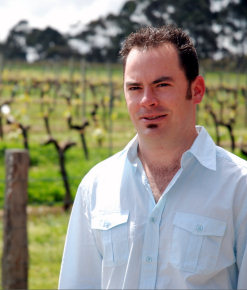
Cape Mentelle and Cloudy Bay are now owned by French luxury house Louis Vuitton Moet Hennessey. Tim tells me that LVMH allows the winery to operate autonomously, though buying barrels and supplies for Cape Mentelle, Cloudy Bay and Domaine Chandon does bring benefits for the Antipodean operations. Around 85% of the oak in the cellars is French, the rest US, but I saw lots of oak trials as the team is constantly evaluating coopers and woods. Cape Mentelle’s Cabernet Sauvignon helped put the youthful Margaret River region on the map in 1984 and 1985, with two consecutive wins of Australia’s most prestigious wine trophy, the Jimmy Watson Trophy.
for tasting notes on 9 wines from the Cape Mentelle
Leeuwin Estate
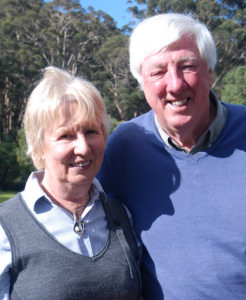
Leeuwin has carved an enviable name for its extremely fine varietal wines. Top of the range is the ‘Art Series’, with an outstanding Chardonnay and superb Cabernet Sauvignon, Riesling, Sauvignon Blanc and Shiraz. The ‘Prelude’ range is lower priced but still offers handmade wines of very high quality and capable of cellaring, whilst the ‘Siblings’ range is intended to be ready to drink. Today Leeuwin’s operation is a huge tourist attraction in its own right, with a fine restaurant and series of international concerts staged in the grounds each summer that has featured everyone from the London Philharmonic Orchestra, to Diana Ross, to Sting in its 25 years.
for tasting notes on 12 wines from the Leeuwin Estate
Howard Park

Howard Park’s Margaret River cellar was completed in 2000, and was built according to feng shui principles, aligned 2.5 degrees off magnetic north. It is a cool, relaxing place, with a busy cellar door operation. Parts of the property have been deliberately left as nature reserves to provide habitat for birds and wildlife. The Burches say their long-term plan is to create a bird sanctuary to be enjoyed by visitors to the winery. The vineyards are not farmed organically, but vineyard manager in Margaret River, Jeff’s brother David, says achieving harmony is his aim, keep the human impact on the environment to a minimum and targeting treatments on specific areas only if and when it is required. In 2008 Jeff Burch and Burgundian winemaker Pascal Marchand launched a joint venture called Marchand & Burch, making wines in Western Australia with a French philosophy. Those wines are also made with Tony Davis in day-to-day charge, and all three labels – Marchand & Burch, Howard Park and Madfish are imported by Bibendum Wines.
for tasting notes on 14 wines from the Howard Park
Evans & Tate
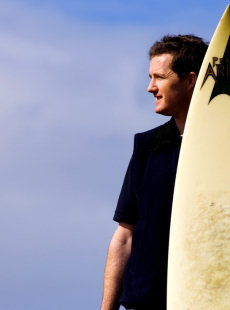
The company suffered a double whammy of bad luck recently when their UK distributor, HwGC collapsed, leaving them to find a new distribution, which they have done in the shape PLB Ltd. The company’s wines are currently in Tesco.com with the Classic range, and in some Tesco branches and other retailers with others ranges.
for tasting notes on 16 wines from Evans & Tate
Clairault
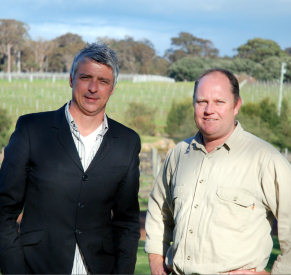
For the last six years the estate has been working almost chemically free and using biodynamic practices. Will tells me “We’ve no real wish to be certified, as we like to use a little more sulphur than some, and in this climate it would tie us down too much.” Unlike much of the east and south, there are no real problem with drought in Western Australia, “especially closer to the coast,” says Will, though he adds “Although rain doesn’t seem to be getting as far into the country as it once did.” A double trophy winner for their Cabernet Sauvignon at the International Wine Challenge in London, Marks & Spencer stock Clairault’s Sauvignon Blanc and both Cabernets (priced at £9.99/£16.99). The wines are also in the UK on-trade through Waverley.
for tasting notes on 8 wines from Clairault
Stella Bella

Janice’s career is no less interesting, including her stint as head brewer at Little Creatures brewery in Freemantle for its first year. The Suckfizzles top the range, coming from that southerly Augusta vineyard. Down here, wind and the extent of cloud cover during the ripening season are significant risks, but as Stuart says, “it’s challenging, but it creates a unique wine and unique experience every vintage.” The Stella Bella range is the ‘core’, and is quirky and adventurous including not just Margaret River classics like Cabernet Sauvignon and Semillon/Sauvignon Blanc, but everything from Pink Muscat to Sangiovese to Tempranillo. Added later as an entry level, fruit for Skuttlebutt is sourced from across Western Australia. UK importer is Alliance Wines.
for tasting notes on 18 wines from the Stella Bella
Voyager Estate

A shake-up in 2009 saw former viticulturist Steve take over management of the operation when winemaker Cliff Royle resigned. Some rumours suggested he was unhappy with volume being increased at the expense of quality, but he has since been replaced by Travis Lemm (left of picture) and on my visit the new team seemed full of confidence and committed to making the highest quality wines. Sampling the most recent vintages seemed to bear this out. Wines in the Tom Price range are only made in exceptional years and are sourced from single vineyards on the Estate. UK importer is Justerini & Brooks.
for tasting notes on 11 wines from the Voyager Estate
Devil’s Lair
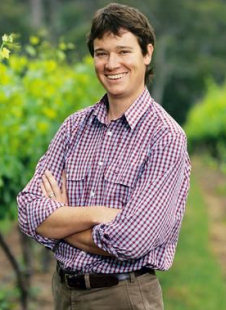
Both of their existing ranges, Fifth Leg and Devil’s Lair, have also been ‘refreshed’ in terms of winemaking and labelling. As the final part of Oliver’s ‘hierarchy project’, there will be a new high-end white and red, but those are a work in progress. I ask how this high-end wine is shaping up, but Oliver doesn’t give too much away. “Our industry has to be careful,” he says. “In particular we shouldn’t play the Bordeaux and Burgundy game of always saying this year is it the best year ever. We have to be honest. Eventually the market will decide if the quality of my wines is good enough.”
for tasting notes on 6 wines from the Devil’s Lair
Xanadu
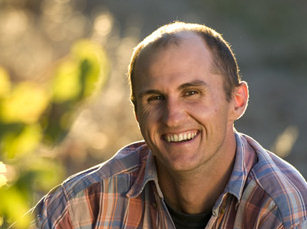
The public listing led to a massive drive after volume, with output quadrupling in just a few years. Xanadu’s reputation, and some say quality, suffered through this period, and in 2005 the business was purchased by the Rathbone family, to add to their impressive portfolio of wine estates that includes Yering Station and Mount Langhi Ghiran. Though one of the earliest vineyards in the area, planted in 1977, Xanadu’s 85 hectares today are still pretty much dedicated to Margaret River’s key varieties Chardonnay and Cabernet Sauvignon, as well as Sauvignon Blanc and Semillon. Xanadu’s UK agent is Enotria.


